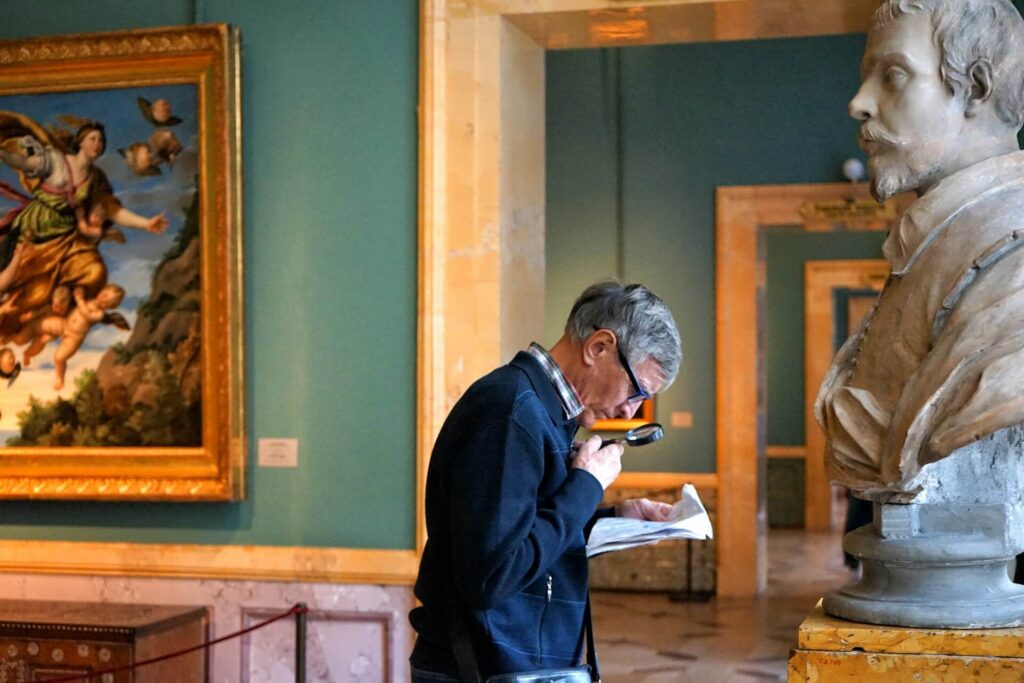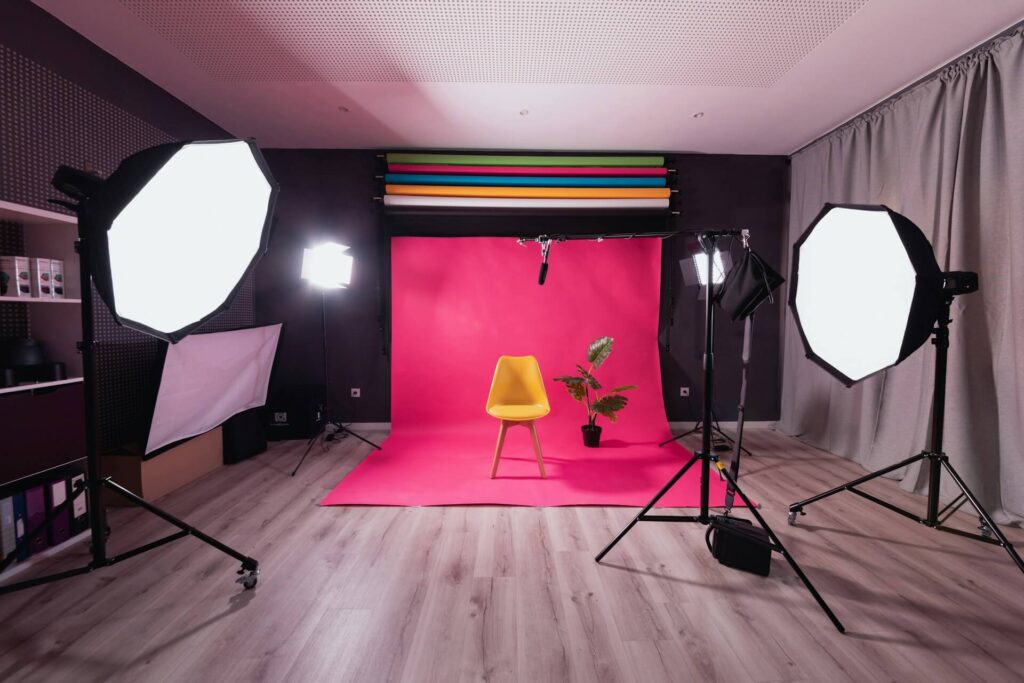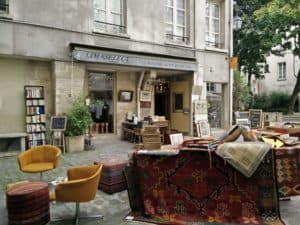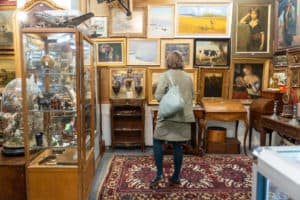How to Value and Sell Your Antique or Vintage Collectibles
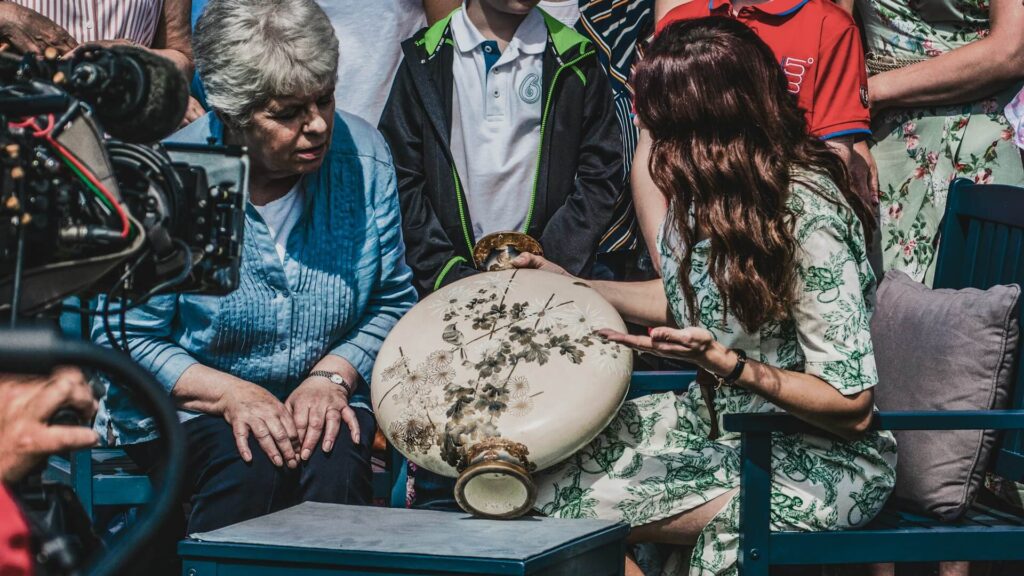
You’ve found it—tucked in the attic, buried in the back of a closet, or maybe hiding in plain sight on Grandma’s shelf: a curious object, rich with age and possibly…value? Whether it’s a teapot with lion’s feet, a stack of 1980s concert tees, or an old Louis Vuitton steamer trunk that smells faintly of history, there comes a time when we wonder: Is this worth something? And if it is—how on earth do I go about selling it?
Welcome to the surprisingly nuanced world of antique and vintage collecting, where value isn’t just about age—it’s about story, style, scarcity, and demand. In recent years, the rise of circular economies, nostalgic design trends, and Gen Z’s obsession with “authenticity” has helped drive renewed interest in pieces that were once passed over. Suddenly, that Bakelite bracelet? It’s a fashion statement. That lamp? A conversation starter and a sale waiting to happen.
But before you start dreaming of dollar signs, there’s homework to do—and it starts with knowing exactly what you’ve got. In this guide, we’ll walk through the key steps to identifying, valuing, and selling your antique or vintage treasures, whether you’re decluttering, downsizing, or simply trying to make room for something new. Spoiler alert: it’s not always fast, but it can be fun, and often a little emotional.
Know Your Object: Identification & Initial Research
Not all that glitters is Georgian gold. Before you start pricing or photographing anything, the first—and arguably most crucial—step is understanding what you’re working with. Are you looking at a true antique (generally 100+ years old), a mid-century collectible, or a vintage piece from, say, the 1980s? While all are marketable, their audiences, value drivers, and appeal can differ wildly.
Start with basic sleuthing. Examine the item closely for clues: stamps, engravings, labels, signatures, or country-of-origin marks can be game-changers. Online databases like Kovels, WorthPoint, JustAnswer, or even Reddit’s r/Antiques can help you cross-reference these details. If you’re dealing with furniture, flip it over—manufacturing marks, screws, or types of joinery can date a piece faster than any appraiser.
You don’t need to become an expert overnight, but it helps to speak the right language. Instead of listing “old wooden chair,” learn to recognize terms like “Windsor,” “Chippendale,” or “Eames-era molded plywood.” Language matters—a lot. It not only boosts credibility but also ensures your listing reaches the right buyers when it’s time to sell.
And don’t be afraid to Google relentlessly. That seemingly generic plate might turn out to be a piece of transferware by Spode or Johnson Brothers—both of which still have decent resale value depending on the pattern. Books can help too: Judith Miller’s antique guides are industry staples, while the free online Antique Price Guide is solid for ballpark estimates.
Remember, the goal here isn’t to put a price on it just yet. It’s about context. You want to know what it is, when it was made, where it came from, and who made it. Those four W’s are your foundation.
Assess Condition, Authenticity & Rarity
Once you know what you’ve got, the next question is: how well has it survived?
Condition plays a huge role in value, but it’s not always black and white. Some collectors cherish a bit of patina—it shows age and authenticity. Others want pristine condition, especially when it comes to ceramics, , or textiles. When assessing condition, be honest with yourself and your future buyers. Is there crazing in the glaze? A chip? Rust on the hinges? Has it been restored? Keep a small notebook to document details—it’ll save you time later when writing your listing.
Authenticity is a touchier subject. The world of fakes and reproductions has been booming for decades (especially with furniture and advertising memorabilia), and it’s surprisingly easy to mistake a reproduction for the real thing. If you’re in doubt, it’s worth consulting a professional. Appraisers like Dr. Lori Verderame (yes, she’s the one from TV) offer online evaluations, or you can check with your local . Community forums are also helpful, though crowdsourcing advice always requires a dose of caution.
Rarity, too, is a double-edged sword. Sure, one-of-a-kind items can command high prices—but only if there’s a buyer out there who wants it. An antique commode with impeccable marquetry may be rare, but if no one’s decorating in Louis XV style right now, you might struggle to move it. On the flip side, common items that are hot—like vintage Pyrex, space-age Italian lighting, or early Apple computers—can sell for surprising sums.
And lastly, don’t forget about trends. The market is fickle. One year, it’s all about Mid-Century Modern; the next, it’s kitschy ‘90s nostalgia. So while you may have a 19th-century Victorian fainting couch, if the style du jour is Memphis Milano, be prepared to wait or pivot your strategy.
Determine Market Value & Price Smart
So, you’ve done the homework. You know your object’s origin, style, and general condition. Now comes the part everyone’s been waiting for: what’s it worth? Unfortunately, there’s no antique pricing genie. Value, like fashion, fluctuates—and is influenced by demand, season, and sometimes even TikTok.
Start by browsing actual sold listings. Not just what people hope to get, but what they’ve actually gotten. eBay’s “sold” filter is your new best friend. Look for listings that closely match your item in condition and size. Etsy and Ruby Lane are also good barometers, though prices there can skew high. Cross-reference with auction house archives like LiveAuctioneers or Invaluable, especially for fine art or furniture.
Price guides—like those from Kovels or Miller’s—are helpful for ballpark ranges, but be mindful that printed values can be outdated. And don’t forget the fees. If you’re selling on a platform like eBay, expect to lose about 13–15% in final value fees, plus shipping and payment processing. Consignment shops typically take 30–50%, but they do the heavy lifting.
A good pricing strategy often involves a bit of finesse. One approach is to start slightly above your bottom-line price, leaving room for negotiation. Another is to list lower to generate fast interest and potential bidding wars. For rarer items, auctions can create competitive energy—if there’s a market for it.
Pro tip: Consider the psychology of numbers. A piece listed at $495 may move faster than one at $500, even though it’s essentially the same. Human brains are weird that way.
Choose the Right Sales Channel
Where you choose to sell can be just as important as what you’re selling. In today’s hybrid world, options abound—from your neighborhood flea market to niche global marketplaces. Each comes with its own perks and pitfalls.
like eBay, Etsy, and Ruby Lane cater to a wide, often international audience. eBay is fast-moving, excellent for , and attracts deal-seekers. Etsy is more curated—ideal for handmade, vintage, and decorative items—but it’s slower-paced. Ruby Lane, while more selective and seller-friendly, has a narrower buyer base and requires approval to list. If you have high-end antiques or art, consider 1stDibs or auction platforms like Catawiki.
Local sales offer a different experience. Think consignment shops, antique malls, vintage fairs, or even yard sales. These venues can be ideal for large or fragile pieces you’d rather not ship. They also allow buyers to see and touch items, which can boost trust—and price. The downside? Foot traffic can be hit or miss, and you’ll often pay rent or commission.
Social media is also playing a growing role. Instagram shops, Facebook Marketplace, and even TikTok vintage auctions are taking off. If you’re confident in your photography and can tell a story, this route can yield surprisingly good results—especially for trending items like , retro decor, or quirky collectibles.
If you’re selling a large collection, estate sale companies or local auction houses can streamline the process. While their cuts are steeper, they often bring in the right buyers and can appraise and market the items for you.
Ultimately, it’s about matchmaking. A 1960s bar cart might sell fast on Facebook Marketplace in a city apartment hub, while a Qing Dynasty vase belongs on a platform that draws serious collectors. Try not to rush the process. Take the time to find the audience that understands—and values—what you’re offering.
Craft a Compelling Listing
No matter where you decide to sell, one truth holds: great listings sell. You don’t need to be a professional writer or photographer, but you do need to help buyers see what you see.
Start with clear, natural-light photos. Aim for multiple angles, and don’t forget the details—labels, marks, flaws, or special features. A photo of a wooden chair from the front is nice. A photo that includes a close-up of the dovetail joinery? That’s a signal of quality and craftsmanship. Don’t be afraid to include a shot of a minor crack or chip; transparency builds trust.
Next comes the description. Avoid just saying “old bowl” or “vintage clock.” Tell its story. Was it part of a larger set? Did it come from a known designer or maker? Even better—does it have family history? “My grandfather picked this up in post-war Germany” might not matter to all buyers, but it humanizes the item in a way that makes it more memorable.
Use descriptive terms that people search for. Think “Art Deco brass candlesticks, 1930s, French origin” rather than “cool vintage candle holders.” If you’re not sure which keywords to use, try typing a few guesses into Google or eBay and see what autocompletes.
And always, always mention condition. Don’t overstate or underplay it. If it has wear, be honest. If it’s mint, say so—but explain what “mint” means. One person’s “excellent” is another’s “heavily used.”
Finally, keep your tone friendly and informative. Buyers don’t just want information—they want to feel confident in the seller. You don’t need to oversell. Let the object and your storytelling do the work.
Sell & Ship with Confidence
You’ve priced your treasure, listed it beautifully, and—ding!—it sold. Now comes the part that many first-time sellers underestimate: getting it to its new home safely and professionally. No, it’s not the glamorous side of selling, but it’s the difference between a glowing five-star review and a refund request from a disappointed buyer.
Start with packaging. Whether you’re shipping a Depression bowl or a walnut-framed mirror, double-boxing fragile items is the gold standard. Use plenty of bubble wrap (not newspaper), and fill empty spaces with packing peanuts or crumpled kraft paper. Antique dealers will tell you: overprotect, not under.
Label clearly, and include a little thank-you note. It’s a small detail, but buyers love it—and it signals that you’ve taken care of their purchase. If it’s a higher-value item, insure it. USPS, UPS, and FedEx all offer coverage. International shipping? Double-check customs declarations. Falsifying value to avoid import taxes is risky—and illegal.
For larger items, consider offering “local pickup only” or using third-party shippers like uShip or Roadie. You’d be surprised how many buyers are willing to drive for the right piece, especially if it’s one-of-a-kind.
And communication matters. If there’s a delay or question, answer promptly and professionally. Be kind. You’re not just selling an object—you’re cultivating a reputation. The antique and vintage world, despite being online, is surprisingly tight-knit. Word travels.
Beyond Selling: Legal, Taxes & Emotional Logistics
Here’s where things get a little less romantic but equally important.
Let’s start with the tax man. If you’re in the U.S. and selling a high-value collectible—especially with regular frequency—you may owe capital gains tax. The IRS categorizes collectibles (art, antiques, stamps, coins) separately, with a long-term capital gains tax rate of up to 28%. Yes, even Aunt Hilda’s Tiffany lamp can trigger tax implications if it sells for a significant sum.
For casual sellers? You’re probably fine. But if you’re liquidating a collection or turning it into a side hustle, talk to a tax advisor. Some states also require you to collect and remit sales tax. If you’re selling through a major platform (like Etsy or eBay), many now handle this automatically—but it’s good to check.
There’s also the legal aspect of provenance. Selling Native American artifacts, ivory, or items tied to looted art comes with serious ethical and legal issues. Know your item’s background. If you’re unsure, skip the sale or consult a professional.
And then there’s the emotional side. Selling heirlooms can stir up unexpected feelings—guilt, nostalgia, even relief. You’re not just moving stuff; you’re curating a legacy. If an item holds deep personal value, ask yourself: am I ready to part with it? Sometimes the right choice is to donate instead. Museums, historical societies, or even themed nonprofits may be thrilled to accept meaningful items.
Think of it this way: you’re not just clearing out space. You’re putting a piece of history back into the world for someone else to love.
Tips from the Pros & Emerging Trends
The vintage and antique market isn’t static—it moves with cultural shifts, decorating trends, and generational tastes. What’s hot today might be passé tomorrow. But some items have staying power, and the pros are keeping their eyes peeled.
Sally Schwartz, founder of the Randolph Street Market in Chicago, told MarketWatch recently that “attic treasures” are making a comeback as homeowners seek soul in their interiors. “People are done with fast furniture,” she says. “They want patina. They want personality.” And she’s right—scroll through Instagram and you’ll see everything from Eastlake dressers to moody oil portraits back in vogue.
Gen Z is driving an unexpected boom in vintage. Think Y2K fashion, maximalist décor, even early tech (yes, that iPod Classic could be worth something). According to eBay’s 2024 Vintage Report, retro electronics, kitschy housewares, and 1990s toys have all seen double-digit growth.
Dr. Lori Verderame, the popular appraiser and TV personality, regularly reminds sellers to focus on condition and provenance—but also to “follow the design trends.” What’s in demand right now? Mid-century still holds strong, but 1970s glam (hello, Lucite and smoked glass) and even the 1980s Italian Memphis movement are seeing a revival.
So how do you keep up? Stay curious. Subscribe to auction newsletters, follow antique dealers on Instagram, visit markets often, and trust your gut. If something catches your eye, chances are it’ll catch someone else’s too.
And one last gem of advice from seasoned sellers: always ask. That odd little ceramic animal or quirky old ad sign you almost tossed? Ask before you donate. More than a few six-figure finds have started that way.
Conclusion: Let the Stories Live On
Selling antiques and vintage collectibles isn’t just about clearing shelves or cashing in—it’s about storytelling. Each object has lived through eras, crossed borders, and meant something to someone. When you identify it, research it, photograph it thoughtfully, and send it off to a new home, you’re not just selling—you’re preserving a bit of history.
Take your time. Not every item will be a windfall, but every sale can be a little journey. From that first moment of discovery—dusty, forgotten, and curious—to the careful packing and wave goodbye, the process can be surprisingly satisfying. And who knows? The item you let go today may become the heirloom of tomorrow in someone else’s story.
Whether you’re decluttering with intention, starting a side hustle, or simply reconnecting with your past through objects, the act of selling vintage is its own kind of art. And once you do it a few times, it becomes something else too—an adventure.
So go ahead. Dig through the boxes, look twice at that “junk” drawer, and start writing the next chapter of your objects’ lives. The market is out there. The buyers are waiting. And somewhere, your forgotten gem might just be someone else’s holy grail.
Cover photo by K. Mitch Hodge on Unsplash


